A logic model is a visual representation of how a program is expected to function to achieve a predetermined outcome and the rationale behind its functionality.
It shows the requirements (inputs) that must be provided for the program to perform specific functions (outputs) which have to be fulfilled to achieve a particular desired result (outcome).
Logic models are commonly used by program designers, developers, and research staff to illustrate how program components and activities are matched to the specific desired outcome of the program. The elements of a model are inputs, activities/outputs, outcomes and impacts, assumptions, success indicators, and external factors.
It is created at the beginning of a project or program so that it can be used as a guide towards the program or project implementation process. These models are used during the planning, implementation, staff and stakeholder orientation, evaluation, and justification/advocacy stages of a program.
As a result, it is used as a communication tool between program developers or research staff and other stakeholders such as program managers, partners, or donors. They are used to rally stakeholder support for an initiative by describing what the initiative is trying to achieve and how by using a language that can be understood by everyone involved.
They can be presented as flow charts, maps or tables or any form of imagery that communicates more efficiently with the program stakeholders. They do not necessarily have to be linear unless the program’s logic is itself linear. Complex systems will often use a concept map, network or web to demonstrate relationships between program components. A logic model is alternatively referred to as a log frame, road map or program theory.
Logic Model Templates
Logic models can be simple or complex, depending on the complexity and scope of a program. Sometimes creating the model can take a lot of time and effort. That is why the use of templates is a preferred option instead of creating the logic frame from scratch.
Templates help users effectively capture how the program operates and intends to achieve by outlining the fundamental elements and structure of the model. We have made templates that you can download for free. They are customized to fit logic models for different programs and are easy to personalize.
Following are a few templates for logic models that you can download for free:
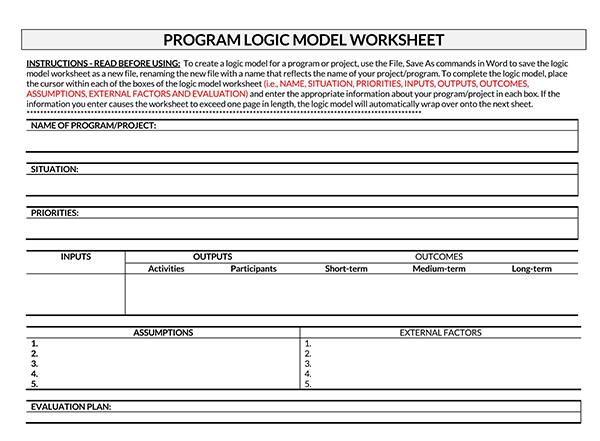
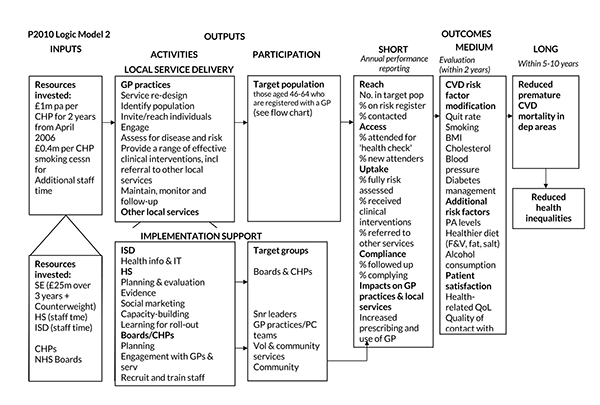
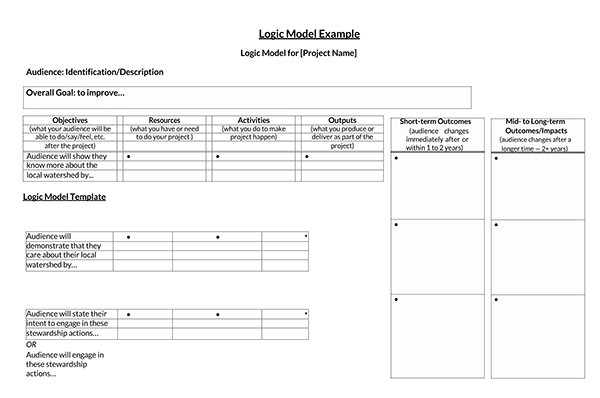
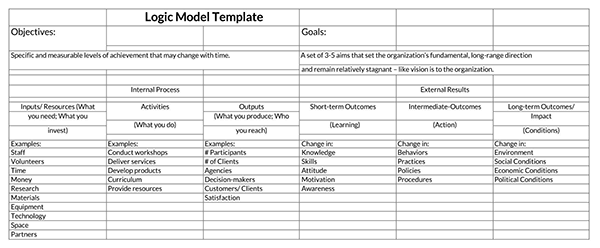
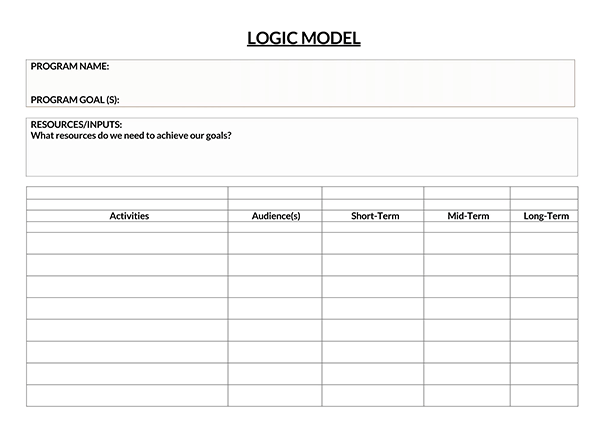
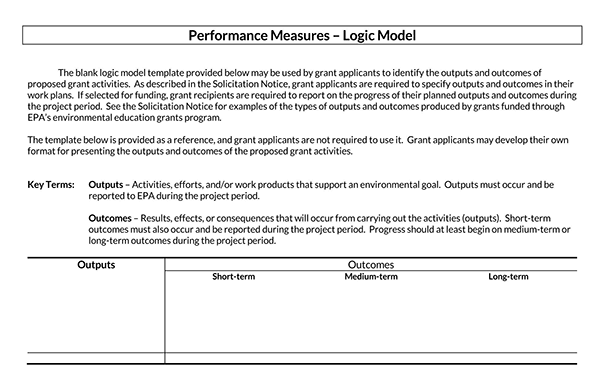
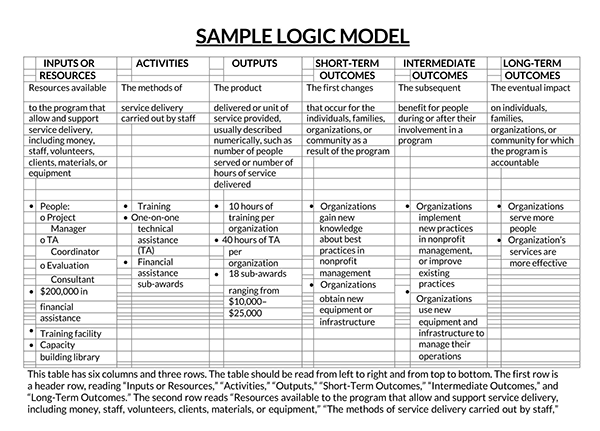
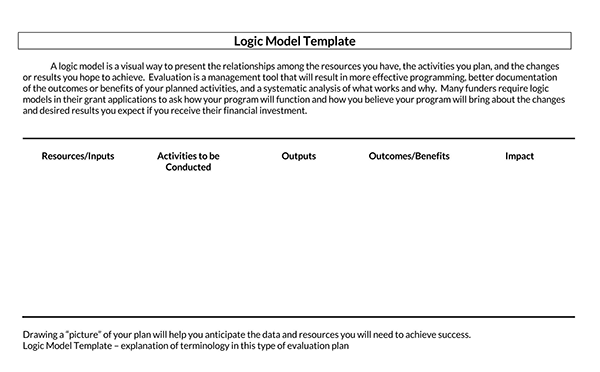
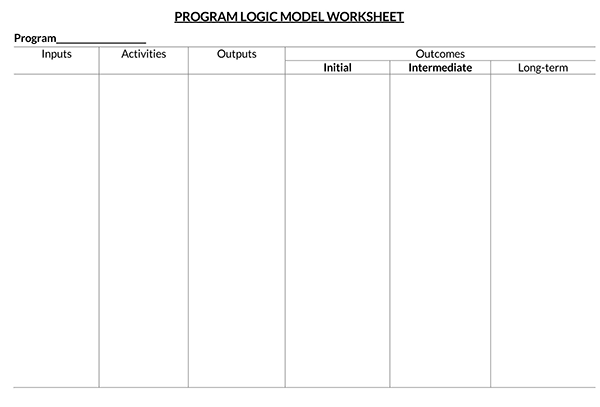
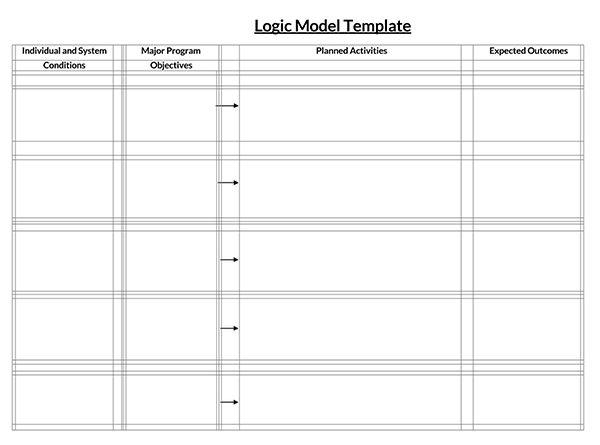

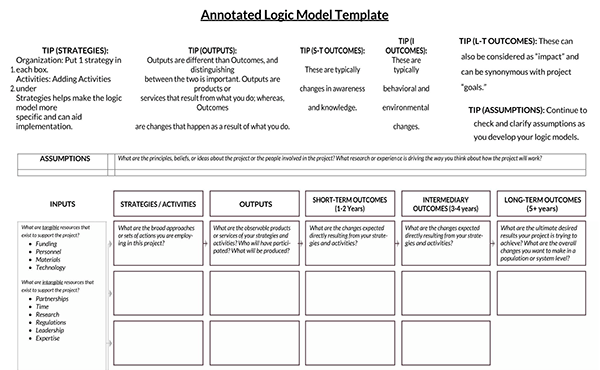
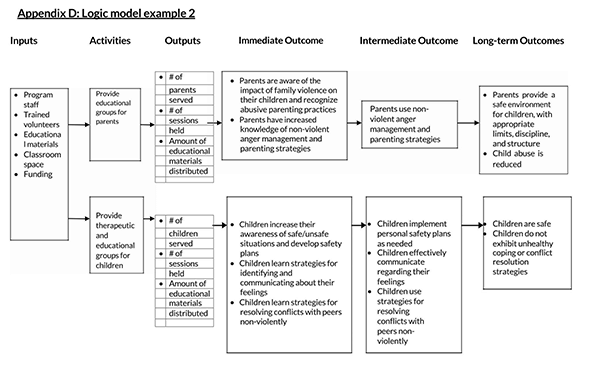
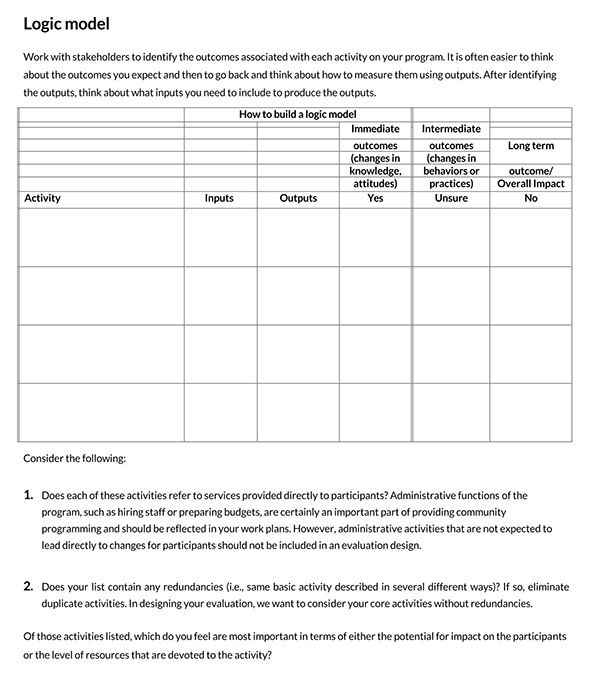
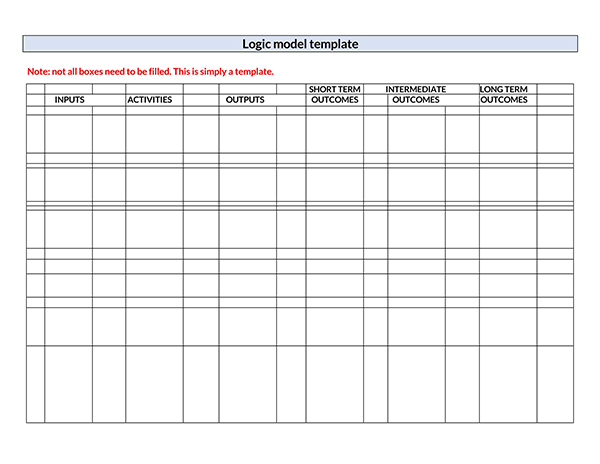
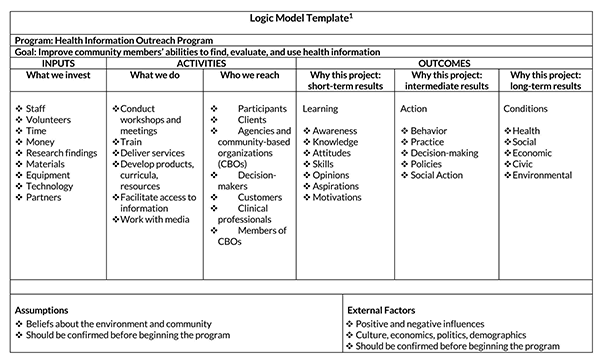
Why You Should Use It
A logic model can be a crucial tool in resource mobilization and management, communication between stakeholders, and measuring the success of a program.
Below are some of the benefits program developers and research get from using the models in their projects:
It spurs success
It narrows down the program into several actionable steps that are directed towards a specific goal or outcome. This way, it gives the people involved in the project a more focused approach to their goal, which increases the probability of success of a program – intentional actions/activities lead to intentional outcomes.
By describing how the components of the program are interconnected, the team gets a clear understanding of which activities have to be completed in order to achieve specific outcomes that the organization is trying to achieve and thus motivates them to work towards the success of the project. Establishing intentional goals such as increasing sales or reducing production time motivates the team to produce more intentional results.
It saves time and money
Planning is essential for an organization’s growth and success. They are expected to illustrate how a program contributes to the organization’s short-term and long-term goals. This ensures organizational resources such as time and money are spent on programs whose ROI (return on investment) is measurable.
In addition, it helps to accurately allocate resources to a program by outlining the inputs (resources) needed to implement a program.
It helps raise money
A well-prepared model clearly communicates how research staff or program developers intend to resolve a particular challenge which can be used as a basis for persuading investors to fund a project.
It also demonstrates a proponent’s organization skills which play a huge role in convincing grantors that allocated funds will be appropriately utilized to create and implement the program. In some cases, the outcomes of a program can be a monetary ROI which can persuade financiers to invest in a program.
Lays the foundation of evaluation efforts
They give a framework for measuring the success of a program by visually displaying aspects of a program that can be evaluated to quantify goals and objectives—having measurable goals and objectives prevent a situation where a project or program is initiated and implemented out of speculation.
It’s a sign of high-performance
Effective programs are highly valued and are easy to sell to potential investors, donors, grantmakers, co-collaborators, clients, and program evaluators as it can be used as proof of excellent accountability. As a sign of high performance, a logic model can be used as a marketing tool and a progress monitoring tool.
As a marketing tool, it communicates a program developer’s commitment to the initiative and its significance by indicating the purpose of the organization, what it is trying to accomplish, and information that persuades third parties to partner with the organization. As a monitoring tool, it is used in developing evaluation questions and plans.
Organizations ought to have organization-wide models and sub-logical models for each program or process. Both types of models are periodically reviewed to measure and indicate the performance of a program which can be submitted to third parties to demonstrate progress and success of the particular program/process.
Fosters partnerships
The models are important in communicating an organization’s or program developer’s goals and activities to other potential organizations or developers with common objectives and understanding. In addition, the model can be used to define short-term and long-term success indicators, which are essential in evaluating the benefits of the partnership.
Helps in program planning
They displays a functional program with visual and text aids with all considerations having been taken into account, including stakeholder input. This ensures no contributing factor is overlooked during the planning stage, and as a result, a holistic plan of creation and implementation of the program can be devised.
Facilitates communication to external parties
Communication to external parties may sometimes be necessary to market the program developer or associated organization. The model typically outlines what adopted programs are made to achieve and how these different programs are implemented to achieve specific results.
Developing a Well-Planned Logic Model
Two characteristics must come out clearly in a model; clarity and direction. This means the elements of a template must be organized clearly and have a sense of direction (rationale).
Below is a step-by-step guide for developing a logic model:
Develop a problem statement
The first item to be defined is the problem or opportunity being addressed by the program. This can also be termed as the purpose of the program or the statement of problem (SOP) and is given as a problem statement. The problem statement should be developed through consultations between all major stakeholders of the program. It also represents the program objectives. The target audience of the program can also be defined at this point.
EXAMPLE
customers are not familiar with the added features of the new phone model. Annual sales are expected to reduce, leading to a reduction in revenue. A program for training customers on how to utilize new features will be introduced.
note
The connections that need to be made with influential people in the community, country, or region can be considered objectives in a logical model.
Determine the inputs and resources
Once an exhaustive description of the problem and the audience affected by the program has been identified, the resources needed to execute the program can be identified and described. Inputs can be infrastructure, tangible and intangible resources needed to implement the initiative and solve the problem.
EXAMPLE
Staff, office space, workstations, facilities, electronic equipment, permits, funding, etc.
Determine key program output (strategies)
Next, the logical model should outline the high-level activities and tasks whose completion is expected to lead to the set outcomes. Outputs are not to be confused with outcomes or results. Outputs are activities that are done enroute to achieving program objectives; steps within the process.
EXAMPLE
Services, events, products, workshops, equipment, publications and activities that facilitate the primary audience’s journey to realize the results.
Identity program outcomes and impacts
The expected results from utilizing the identified inputs and implementing the stated strategies should then be indicated. Program outcomes and impacts represent the program’s ultimate goals and can be defined based on what was achieved and how it affected the primary audience.
Outcomes are realized in a linear continuum from short-term, mid-term to long-term. As a result, outcomes may sometimes be realized immediately or stretched over time depending on the type of program and problem.
EXAMPLE
Increased referrals to other customers, increased brand awareness, increased employee motivation, etc.
More often than not, the different types of goals and impacts will have the following characteristics:
- Short-term outcomes affect awareness, knowledge, attitudes, and skills – basically, learning the program.
- Mid-term goals influence the primary audience’s behavior, decision-making, practice, and actions.
- Long-term goals are often the impacts of the actions, which can be social, economic, political, or environmental; the conditions created by the actions.
Create a logic model outline
Next, all the identified elements should be combined to create the model. While the other steps were meant to gather, collect and clarify information, this step is meant to give the model direction of how all the identified and defined factors of success are interconnected to achieve the desired results.
Below is an example of how a logic model can be outlined:
- Inputs
- activities
- outputs (number and percentage)
- short-term outcomes
- intermediate-term outcomes
- long-term outcomes
Identity external influencing factors
Any external elements outside the program that can influence the implementation and success of the program or its results should be identified.
EXAMPLE
Political climate, media coverage, federal and state laws, inflation, changes in leadership, etc.
External factors can be identified by considering the following:
- Environment/setting: The setting under which the program will be implemented can have indirect or direct impacts on the program. A quick environment assessment or research can be conducted to identify these external factors.
- Other programs: External factors influencing other similar programs will most likely affect the program in question. Consulting people associated with those programs can help in identifying external factors.
- Influences: Social and political figures and cultures that influence the program’s implementation should be identified.
Identity program indicators
The logical model elements should then be created, and the program success indicators should be given. Program indicators are essential for monitoring and reporting purposes. Indicators can be in terms of quantity, rank, percentage, or any other statistical representation.
Two types of indicators are identified; process and outcome indicators. Process indicators are realistic and achievable targets that will be fulfilled before the end goal is realized, such as the number of ad campaigns to be run, workshops to be held, or the number of volunteers to be recruited.
Outcome indicators are used to quantify the intended objective of the model, such as the number of customers converted to paying customers or sales percentage increase after the introduction of the model.
Assumptions
Lastly, any assumptions made for the “logic” of the program to hold should be indicated. These are conditions that are believed to be true for the program to operate as expected and how changes in the program can affect the results.
NOTE
It is recommended that the steps involved in the implementation phase of a program be documented for grantors, primary audience, and potential executors of the program to communicate how the goals were achieved. Documentation should be made in real-time to ensure accurate information is captured.
Theory of Change Vs. the Logic Model
Logic models are one technique out of several approaches used to describe and understand how a program creates a change in the real world. Theories of Change (ToC) are examples of other tools used to describe how a program functions to achieve specific outcomes.
However, even though both techniques make use of the same elements, they are different in the following ways:
Stage of development
It is developed after a program or intervention has already been designed. On the other hand, a ToC is developed before or at the early stages of a program or intervention development. A ToC uses the process of backward mapping – starting with the desired end result first and working backward to identify the interventions or programs that will produce the desired outcome. A ToC is, therefore, more suited for the strategic level, whereas a model is suited for the implementation level.
Time and resource
Due to the complexity of ToCs, they require more time and resources to develop compared to logic models. For the same change and intervention, the development of a ToC will take longer and require more resources than a model.
Nature of the intervention
A ToC captures the complexities of relationships between processes and activities that emanate from a change. Therefore, they are best suited for instances where a lot of factors (internal and external) such as social, economic, political, and institutional factors are associated with the change even if they are not related to the program or intervention, thus giving a broader perspective. A ToC can have more than one pathway/intervention/program. On the contrary, a model is more straightforward and is limited to one program or intervention and associated change.
Importance of intervention
A ToC will give a more in-depth understanding of a program than a logic model. While both are equally worth the time to create, a model will be more sensible to develop for a small project that spans for a short time. ToCs are more suited for larger programs that are expected to last for long.
Here are the templates of the logic model for better assistance:
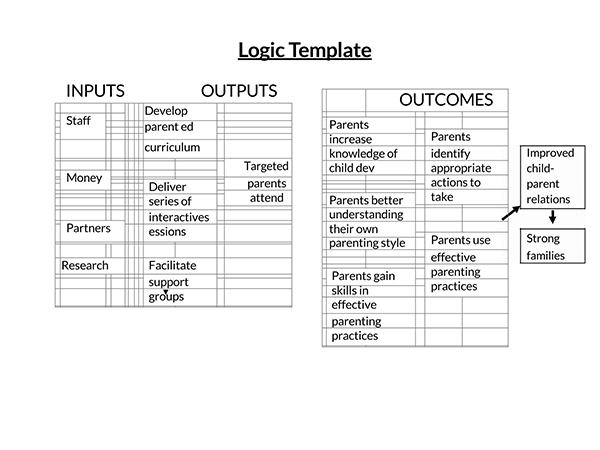
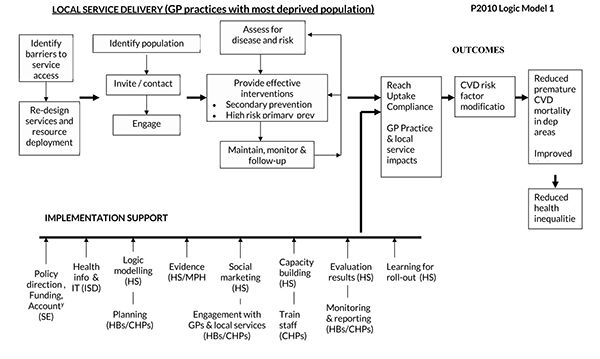
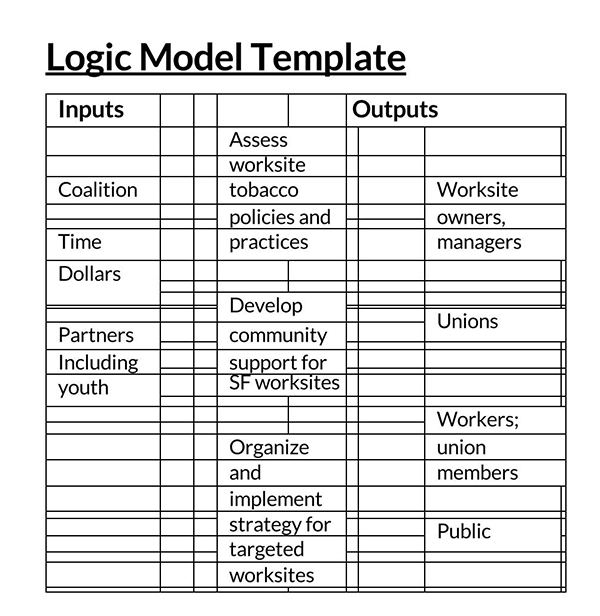
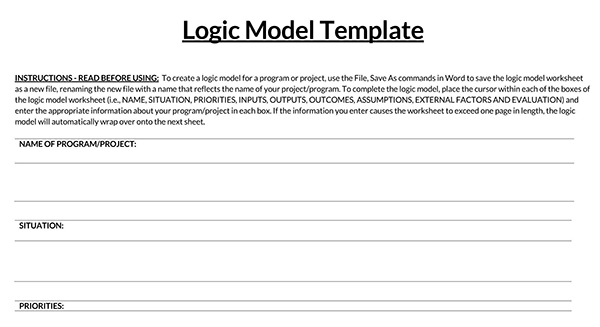
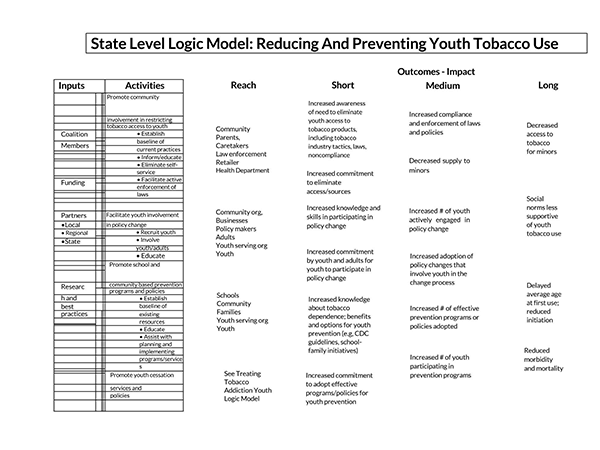
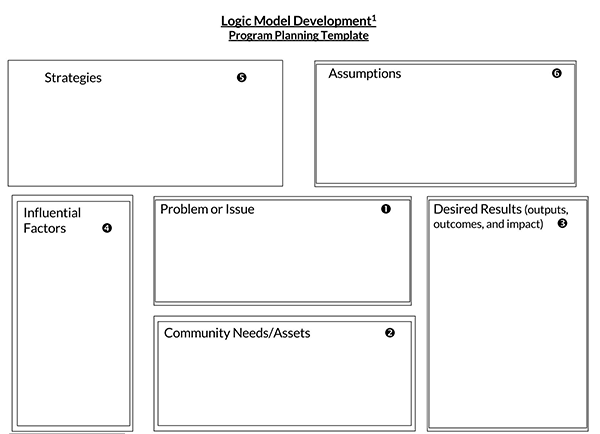
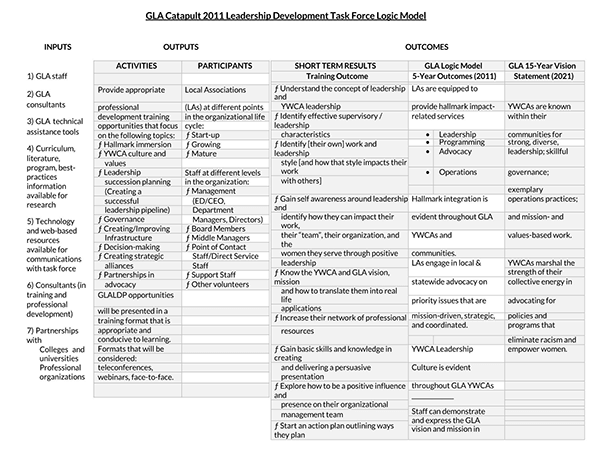
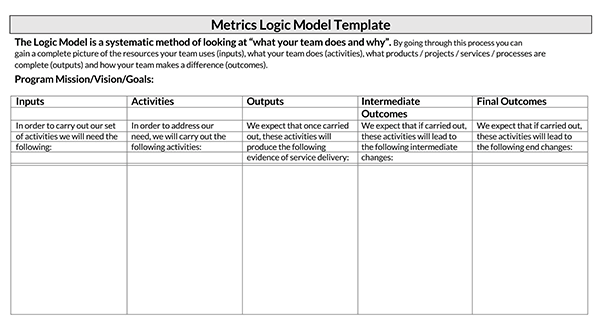
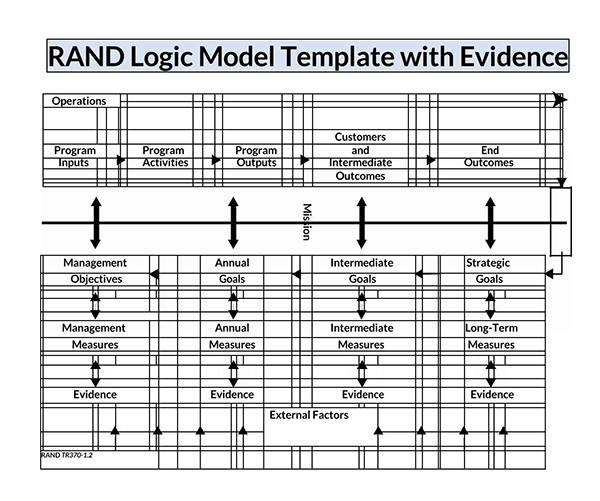
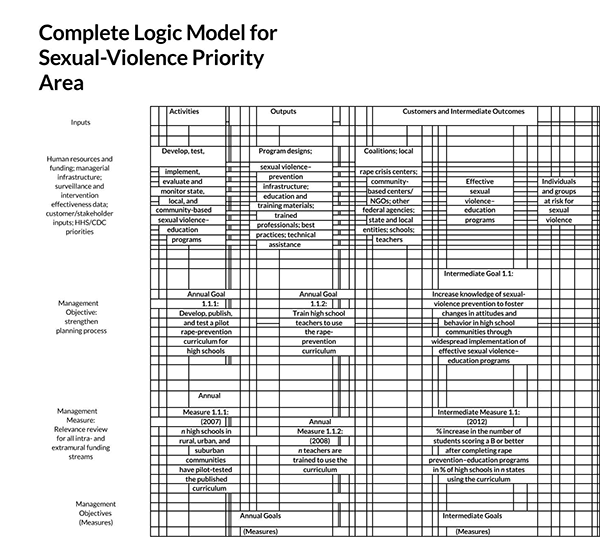

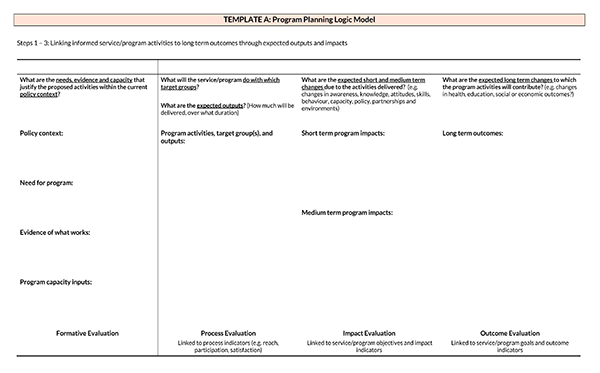
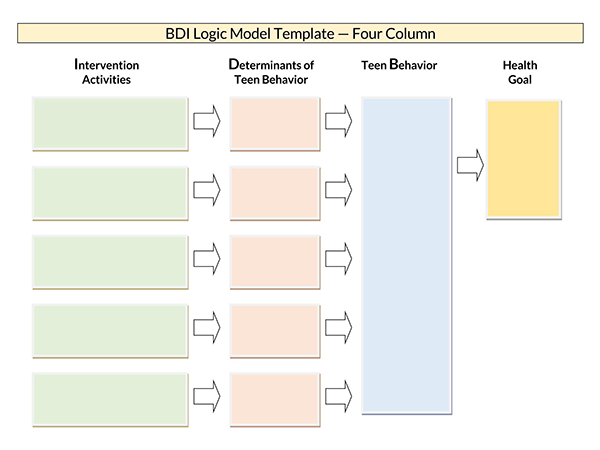
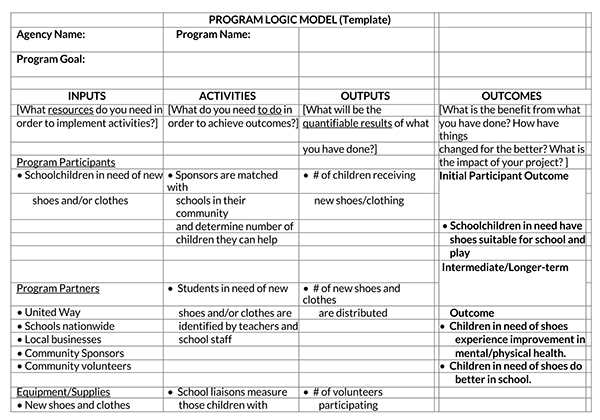
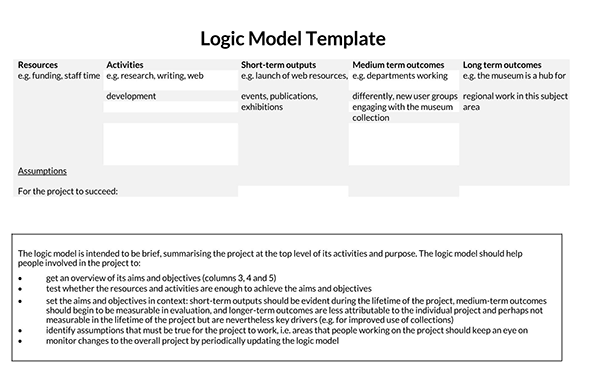
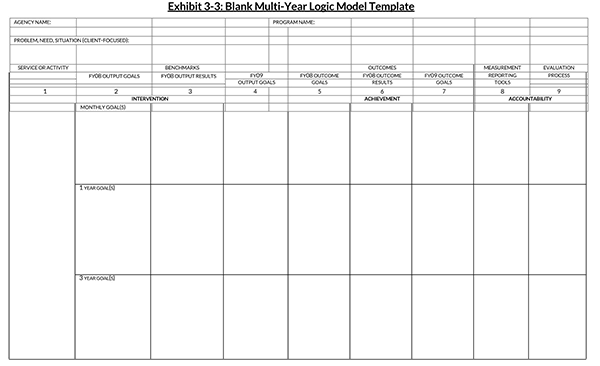
Frequently Asked Questions
Logic models are typically developed by project designers, developers, managers, and research staff with the involvement of key stakeholders of a program in an organization. Program staff with a clear understanding of the program can also contribute to the development of a model.
A logic model is commonly prepared before or during the implementation stage of a project. It is used to ensure all participants and stakeholders understand what the program is meant to achieve and the activities that will be completed to achieve these objectives.
This guide is meant for individuals who want to learn how to create, use and interpret a logic model. This includes program managers and parties that may not have the needed training on creating logic and using the models, such as program staff, grantors, clients, and other stakeholders.
The primary learning objectives of a logic model are; to identify the fundamental elements of a program and illustrate how these elements combine to achieve the program objectives.
The time taken to develop a logic model is influenced by various factors such as level of expertise, scope and complexity of the program, team preparedness, and motivation to complete the process. However, one day will usually be enough to create an effective model, provided the participants have identified and agreed on the problem and objectives of the program.




